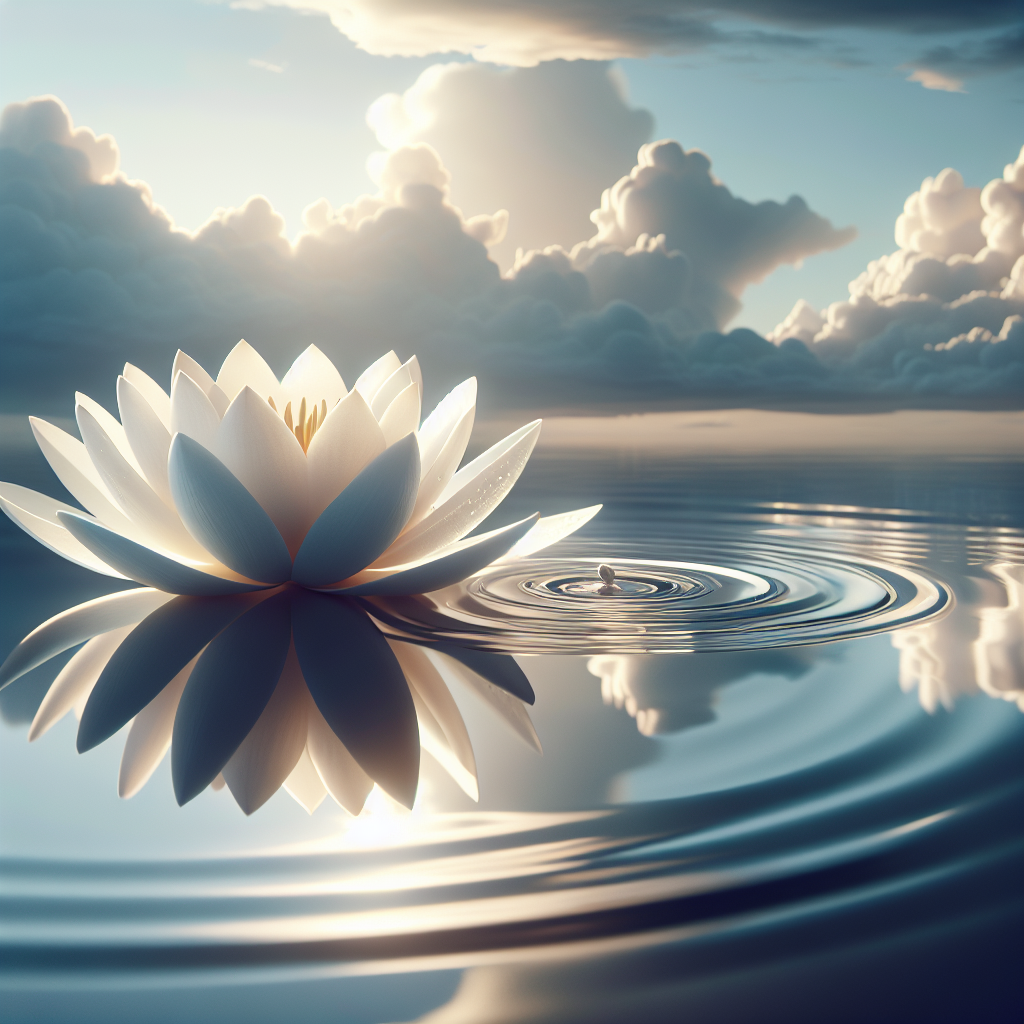If you’ve ever wondered about the correct way to meditate, you’re not alone. With so many different techniques and opinions out there, it can be overwhelming to know where to start. In this article, we’ll explore the essence of meditation and provide you with valuable insights to help you find your own path towards a more peaceful and mindful existence. So, let’s embark on this journey of self-discovery and unlock the transformative power of meditation together.

Choosing the Right Time and Place
Creating a Peaceful Environment
To ensure a successful meditation session, it is important to create a peaceful environment. Choose a quiet and clutter-free space where you can relax without any interruptions. Create a calming ambiance by dimming the lights, playing soft music, or using essential oils or incense. By eliminating distractions and cultivating a serene atmosphere, you can fully immerse yourself in the meditation practice.
Finding a Quiet and Comfortable Space
Finding a quiet and comfortable space is essential for effective meditation. Look for a room or area in your home where you can escape from external noise and disturbances. Consider using noise-canceling headphones or earplugs if you live in a noisy environment. Additionally, ensure that the temperature of the room is comfortable, neither too hot nor too cold, as extreme temperatures can hinder your ability to relax and focus.
Selecting a Convenient and Regular Time
Choose a time for meditation that works best for you and your schedule. Ideally, aim for a time when you are least likely to be interrupted or distracted. Many people find that meditating early in the morning or before going to bed works well as it helps to set a peaceful tone for the day or aids in winding down after a long day. Consistency is key, so try to establish a regular meditation routine to make it a habit and reap the maximum benefits.
Preparing for Meditation
Wearing Comfortable Clothing
When preparing for meditation, it is important to wear loose and comfortable clothing that allows for unrestricted movement and relaxation. Tight or constricting clothes can distract you and make it difficult to find a comfortable posture. Choose fabrics that are breathable and soft, ensuring that your clothing doesn’t cause any discomfort or restriction during your meditation practice.
Emptying the Bladder and Bowels
Before beginning your meditation session, it is advisable to empty your bladder and bowels. This will help you avoid unnecessary distractions and physical discomfort during your practice. By ensuring that your bodily needs are taken care of, you can fully focus on your meditation and delve deeper into relaxation and self-reflection.
Dedicating Time for Meditation
One of the most important aspects of preparing for meditation is dedicating a specific time slot solely for your practice. Avoid rushing through your meditation or treating it as an afterthought. Instead, make a conscious decision to prioritize your well-being by setting aside dedicated time. Whether it’s 10 minutes or an hour, create a space in your schedule where you can fully commit to your meditation practice without being rushed or interrupted.
Adopting a Comfortable Posture
Sitting Cross-Legged on the Floor
Sitting cross-legged on the floor, also known as the traditional lotus or half-lotus position, is a popular posture for meditation. It helps to promote stability and grounding, allowing for a deeper sense of relaxation. Keep your spine straight and your shoulders relaxed, and rest your hands comfortably on your knees. This posture requires flexibility in the hips, so you may use a meditation cushion or bolster under your sit bones to elevate your hips and make it more comfortable.
Using a Meditation Cushion or Pillow
If sitting on the floor is uncomfortable or not possible for you, using a meditation cushion or pillow can be a great alternative. These specially designed cushions provide support and elevation, helping to align your spine and maintain proper posture. Place the cushion at the base of your spine and sit cross-legged or in a kneeling position. Adjust the cushion’s height as needed until you find a comfortable position that allows you to relax and focus on your meditation.
Sitting on a Chair with Feet Flat on the Floor
For those who find it challenging to sit on the floor, sitting on a chair can be an excellent option. Make sure to choose a chair that allows your feet to rest flat on the floor and provides adequate back support. Sit with your back straight, shoulders relaxed, and hands resting on your lap or thighs. This posture allows you to find stability and comfort, enabling you to focus on your breath and meditation practice without any physical discomfort.
Relaxing the Body
Starting with Deep Breathing
Before diving into the meditation practice, take a few moments to engage in deep breathing. Inhale deeply through your nose, allowing your abdomen to expand, and then exhale slowly through your mouth, releasing any tension or stress. Deep breathing helps to calm the nervous system and prepares your body for a state of relaxation and mindfulness.
Progressive Muscle Relaxation
Another effective way to relax your body is through progressive muscle relaxation. Start by tensing and then relaxing each muscle group in your body, starting from your toes and working your way up to your head. As you release the tension in each muscle group, you will feel a deep sense of relaxation and ease. Progressive muscle relaxation helps to release built-up tension and promotes a sense of overall well-being.
Releasing Tension and Stress
Throughout the day, our bodies accumulate tension and stress. By consciously releasing this tension, you can create a more peaceful and receptive state for meditation. Take a moment to scan your body and become aware of any areas where you hold tension. As you breathe deeply, intentionally release any tightness or discomfort, allowing your body to become more relaxed and at ease. This helps to create an optimal environment for a focused and tranquil meditation practice.

Focusing the Mind
Choosing a Point of Focus
One of the key aspects of meditation is focusing the mind. Choose a specific point of focus, such as your breath, a mantra, or a visual object, to anchor your attention. As thoughts arise, gently redirect your focus back to your chosen point of focus. This practice cultivates concentration, allowing you to cultivate a calm and centered state of mind.
Mental Visualization
Mental visualization involves creating vivid images in your mind’s eye to promote relaxation and clarity. Choose a soothing or uplifting image, such as a serene beach or a peaceful garden, and visualize it in detail. Imagine yourself fully immersed in this image, engaging all your senses. This practice helps to calm the mind, reduce stress, and enhance the overall meditative experience.
Repeating a Mantra or Phrase
Repeating a mantra or a phrase is a common technique to focus the mind during meditation. Choose a word, phrase, or affirmation that resonates with you and aligns with your intentions or beliefs. As you meditate, silently repeat the mantra or phrase, gently bringing your focus back to it whenever your mind begins to wander. This practice helps to calm the mind, promote mindfulness, and cultivate a positive state of being.
Breathing Techniques
Observing the Natural Breath
Observing the natural breath is a fundamental breathing technique in meditation. Simply bring your attention to your breath, noticing the sensation of the air entering and leaving your body. Observe the rhythm and depth of your breath without trying to control or manipulate it. This technique brings awareness to the present moment and helps to calm the mind.
Counting Inhalations and Exhalations
Counting inhalations and exhalations is a technique that aids in focusing the mind and calming the mental chatter. As you breathe in, silently count “one.” As you breathe out, count “two.” Continue this pattern, counting up to ten, and then start again from one. If your mind wanders, gently bring your focus back to the counting. This technique enhances concentration and helps to anchor your awareness in the present moment.
Alternate Nostril Breathing
Alternate nostril breathing is a powerful breathing technique that balances the energy in your body and calms the mind. Gently close your right nostril with your right thumb and inhale through your left nostril. Close your left nostril with your ring finger, release your thumb from your right nostril, and exhale through the right nostril. Inhale through the right nostril, close it with your thumb, release your ring finger from your left nostril, and exhale through the left nostril. Repeat this cycle, focusing on the flow of breath and finding a calm and steady rhythm.
Mindfulness Meditation
Bringing Awareness to the Present Moment
Mindfulness meditation involves intentionally bringing your attention to the present moment without judgment. Sit comfortably and observe the thoughts, sensations, and emotions that arise, without getting caught up in them. Cultivate an attitude of curiosity and non-reactivity as you witness the present moment as it unfolds. This practice enhances self-awareness, reduces stress, and fosters a deeper connection with yourself.
Observing Thoughts and Sensations
During mindfulness meditation, you develop the ability to observe your thoughts and sensations without actively engaging with them. Notice the thoughts that come and go, observing them as if they were passing clouds in the sky. Similarly, observe bodily sensations without clinging to them or labeling them as good or bad. This non-judgmental awareness helps to cultivate a sense of equanimity and acceptance.
Non-Judgmental Acceptance
A crucial aspect of mindfulness meditation is fostering non-judgmental acceptance of your experiences. Allow your thoughts and emotions to arise and pass without attaching any value judgments to them. Instead of labeling experiences as good or bad, right or wrong, simply acknowledge them and let them go. This practice encourages self-compassion, self-acceptance, and the cultivation of a more peaceful and balanced mind.
Guided Meditation
Using Audio or Visual Guidance
Guided meditation involves using audio or visual guidance to lead you through a meditation practice. There are numerous guided meditation resources available, including apps, websites, and podcasts. Choose a guided meditation that aligns with your intentions or desired outcome. The guidance provides structure and support, helping you deepen your meditation experience.
Following a Narrator’s Instructions
As you engage in a guided meditation, listen carefully to the narrator’s instructions and follow them with an open mind. Let go of any expectations or judgments and trust the process. Allow the narrator’s words to guide you through the meditation, bringing your attention to different aspects of your experience. This practice helps to cultivate focus, relaxation, and a sense of inner peace.
Enhancing Meditation Experience
Guided meditations can be enhanced by creating a comfortable and inviting environment. Ensure that the room is free from distractions, dim the lights, and use candles or essential oils to create a soothing ambiance. Use headphones for audio-guided meditations to enhance the quality of sound and immerse yourself fully in the experience. By dedicating time and space for guided meditations, you can enhance your practice and deepen your connection with yourself.
Walking Meditation
Finding a Quiet and Safe Route
Walking meditation is a form of meditation that involves walking consciously and purposefully, focusing on each step and sensation. Find a quiet and safe route where you can walk without distractions or interruptions. It could be a park, a beach, or simply around your neighborhood. Ensure that the environment is conducive to mindfulness and allows for a peaceful and uninterrupted walking meditation experience.
Maintaining Awareness of Body Movements
While walking, maintain awareness of your body movements and sensations. Focus on the sensations of your feet touching the ground, the rhythm of your steps, and the sway of your body. Notice any changes in your posture or balance and make adjustments accordingly. By bringing conscious awareness to your movements, you can cultivate a deeper sense of presence and embodiment.
Focusing on Sensations and Breath
Direct your attention to the sensations in your body and the rhythm of your breath as you walk. Tune in to the feeling of the air against your skin, the sounds around you, and the scents in the air. Allow these sensory experiences to anchor you in the present moment, guiding your attention away from distractions and into a state of calm awareness. Walking meditation can provide a refreshing and grounding experience, connecting you more intimately with the world around you.
Seeking Guidance and Support
Attending Meditation Classes or Retreats
Attending meditation classes or retreats can deepen your understanding of meditation and provide guidance from experienced teachers. Look for local meditation centers or retreats that align with your interests and availability. These structured environments offer a supportive community, opportunities for learning, and a chance to immerse yourself fully in the practice. By participating in meditation classes or retreats, you can receive personalized guidance and interaction with like-minded individuals on a similar journey.
Working with a Meditation Teacher or Guru
If you desire a more individualized approach to meditation, consider working with a meditation teacher or guru. A meditation teacher can provide guidance tailored to your specific needs and aspirations. They can offer insights, support, and accountability, helping you navigate any challenges that may arise during your meditation practice. Working with a meditation teacher provides an opportunity for growth, deepening your understanding and experience of meditation.
Joining Meditation Communities
Joining a meditation community can provide a sense of connection and support on your meditation journey. Look for local meditation groups, online forums, or social media communities where you can connect with others who share your interest in meditation. Engaging in discussions, sharing experiences, and participating in group meditations can foster a sense of belonging and inspire you on your path. By joining a meditation community, you can learn from others, receive support, and expand your knowledge and practice of meditation.
Meditation is a deeply personal practice, and the correct way to meditate may vary from person to person. It is important to find what works best for you and adjust your practice accordingly. The most important aspect of meditation is the intention to cultivate a calm and attentive state of mind. Whether you choose to practice mindfulness meditation, guided meditation, or walking meditation, the key is to approach it with an open heart and a willingness to explore your inner landscape. So find a quiet space, prepare yourself physically and mentally, and dive into the enriching journey of meditation.
